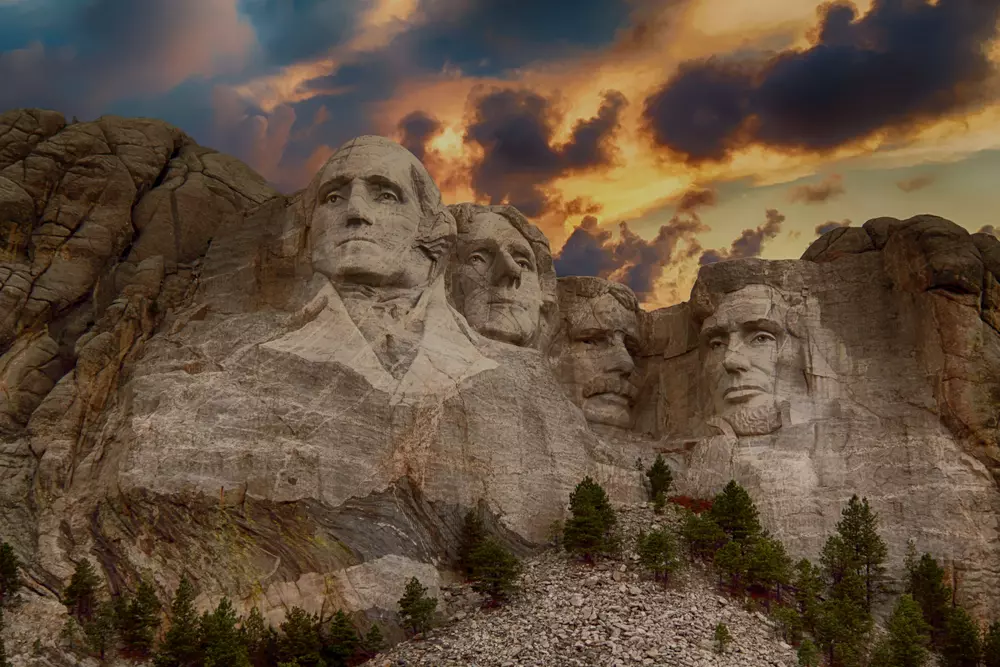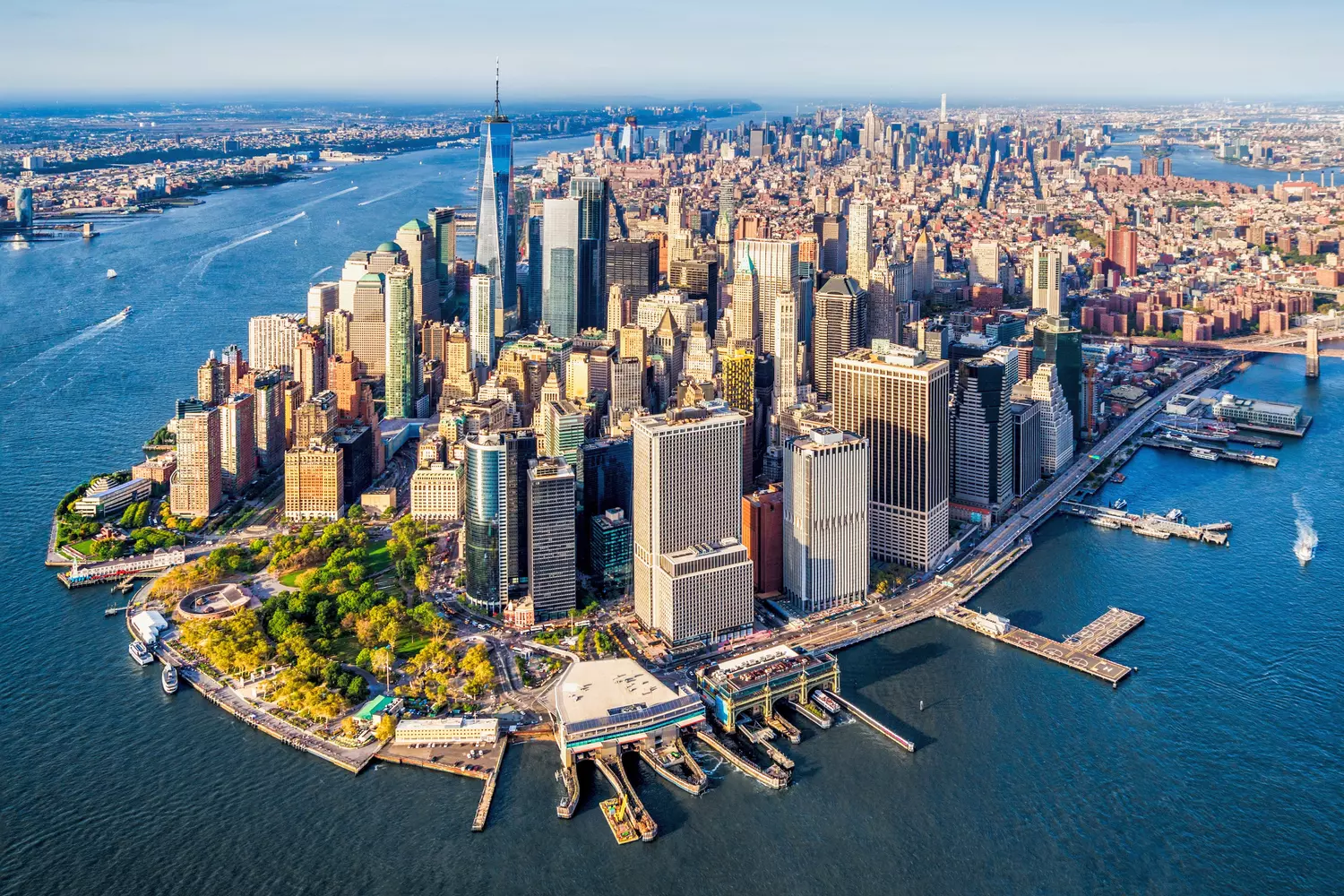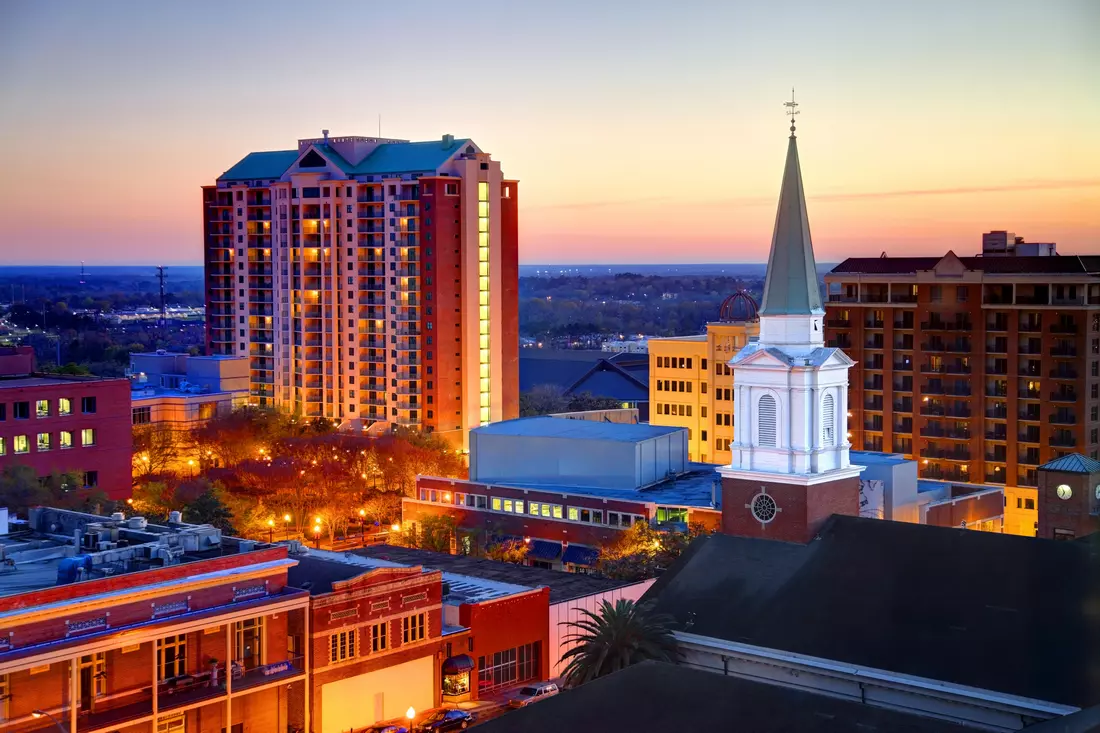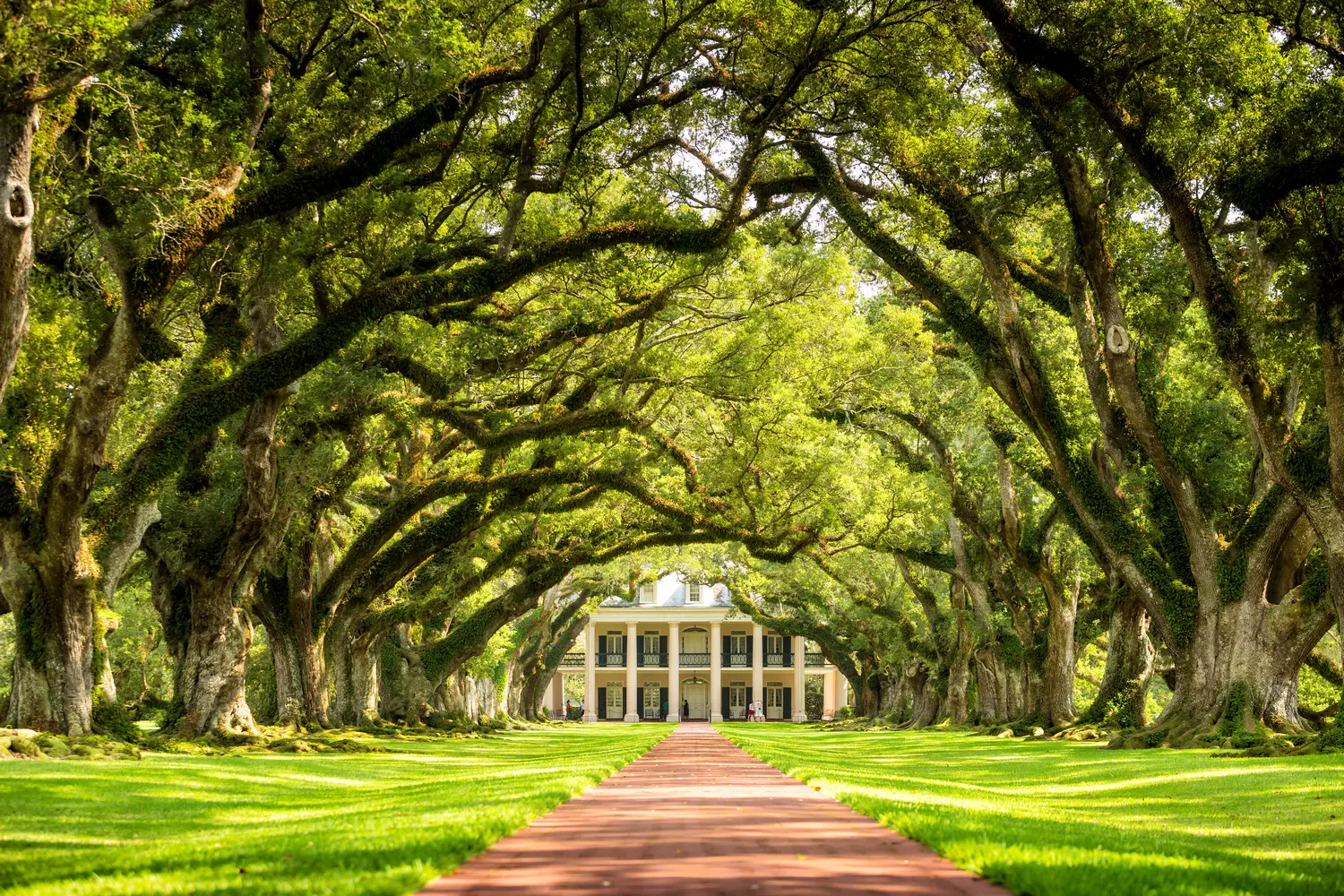If Nevada could talk, it would boast about two things: Las Vegas and Lake Mead. The first — a city of eternal celebration, sparkling with neon lights and the clinking sounds of casinos, where time seems to stop with the ring of coins. The second — its complete opposite. It’s an oasis of silence, the power of nature, and peaceful relaxation, a refuge for those tired of the megacity’s fast pace.
Lake Mead is not just the largest reservoir in the USA. It’s a magnolia among cacti, a blue mirror among red rocks. Its waters are fed by the majestic Colorado River, and it appeared on America’s map thanks to an unprecedented engineering feat at the time — the construction of the Hoover Dam.
This is a place where you can feel humanity conquering the elements, yet at the same time where nature itself shows who’s the real master. Standing at the water’s edge, looking out where the desert hills meet the horizon, you experience a rare 21st-century feeling of true freedom. There are no crowds, no billboards—just the wind, the waves, and a gaze stretching beyond the horizon.
Here, history, ecology, adventure, and silence blend together. In this corner of the American Southwest, everyone finds their own: the photographer — a once-in-a-lifetime shot; the explorer — ruins of ancient civilizations; the romantic — a perfect sunset; and the weary traveler — a peace that no hotel can buy.
And the most amazing part — all this magnificence is just an hour’s drive from Las Vegas. Yes, sometimes miracles are closer than they seem. Welcome to Lake Mead — where water meets the desert and your new journey begins.
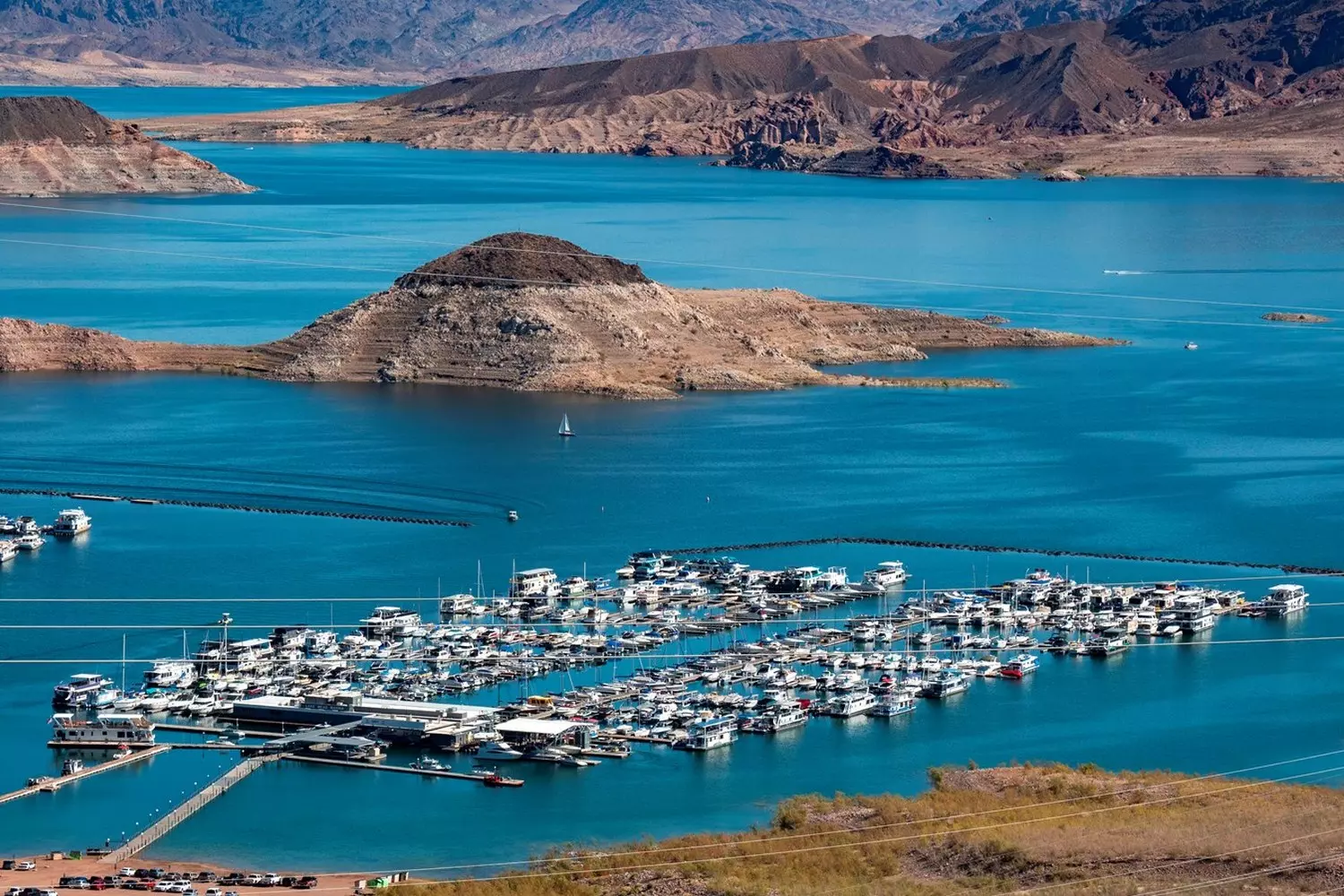
“If Lake Mead disappears, the Southwest will lose not only its water but also the very possibility of living in this part of the country.” — from the U.S. Bureau of Reclamation report
Geography, scale, and origin of Lake Mead
Before setting off on a journey through history and trails, it’s worth pausing to appreciate the geography — it’s fascinating in its own right. Lake Mead is located between two states — Nevada and Arizona. It lies on the border like a natural bridge between two different worlds: the thrill of Las Vegas and the calm of desert canyons.
- At full capacity, the lake covers about 640 square kilometers, making it the largest reservoir in the USA. Its shores are not just the boundaries of a water body, but a winding ribbon stretching over 885 kilometers. For comparison, that’s longer than the entire border between France and Germany.
- The maximum depth reaches 162 meters, comparable to the height of a 50-story building. But it’s not just the depth — the lake impresses with its scale in every sense: from the enormous volume of water to how it fits into the surrounding landscape.
- The creation of the lake was the result of one of the greatest projects of the 20th century. In 1935, after the completion of the Hoover Dam, the flow of the mighty Colorado River was controlled, and the valley between the canyons filled with water. This is how the lake appeared, soon becoming not only an important strategic reservoir but also a popular recreation spot.
- The lake is named after Elwood Mead, an engineer who led the U.S. Bureau of Reclamation. He was not just a technocrat but a visionary who believed that water was not merely a resource but the foundation of prosperity. His approach made it possible to secure stable water and power supplies for the American Southwest.
Thus, Lake Mead became a symbol of the union between nature and mankind — an example of how engineering thought can transform the landscape not by destroying it but by reshaping it.
A story in concrete: how the Hoover Dam was built
The construction of the Hoover Dam is not just an engineering project. It is a story of courage, crisis, hope, and the human ability to overcome the impossible. The early 1930s were the time of the Great Depression. The U.S. was in turmoil, unemployment was soaring, and thousands of families were losing homes and hope. It was then that the government took a bold step — to tame the raging Colorado River and give the country a powerful boost.
- The location was chosen deliberately — Black Canyon on the Nevada-Arizona border was ideal for creating a reservoir. Construction began in 1931. In the peak summer heat, over 5,000 workers labored in two shifts — under conditions that today would be deemed inhumane. Without air conditioning, minimal machinery, and often lacking proper safety measures.
- The work was dangerous. People blasted rock with explosives, installed heavy reinforcing frameworks, and poured concrete at dizzying heights. Temperatures sometimes exceeded +45°C. The labor was exhausting. Yet everyone felt they were part of something great.
- By 1935, the project was completed. The massive concrete arch, standing 221 meters tall and 379 meters long, forever changed not only the landscape but also the region’s economy. The dam supplied millions with water and electricity and gave a push to the development of Las Vegas, California, and Arizona.
- It was named after Herbert Hoover, the 31st President of the United States, who, as Secretary of Commerce, played a key role in organizing the project. Interestingly, during construction, the dam was officially called Boulder Dam, and only in 1947 was its original name restored in honor of Hoover.
Today, the Hoover Dam is not only an active hydraulic structure but also an iconic landmark. Thousands of tourists visit each year to walk along its crest, peek into the power plant, and feel the power of the river and the human will that tamed it.
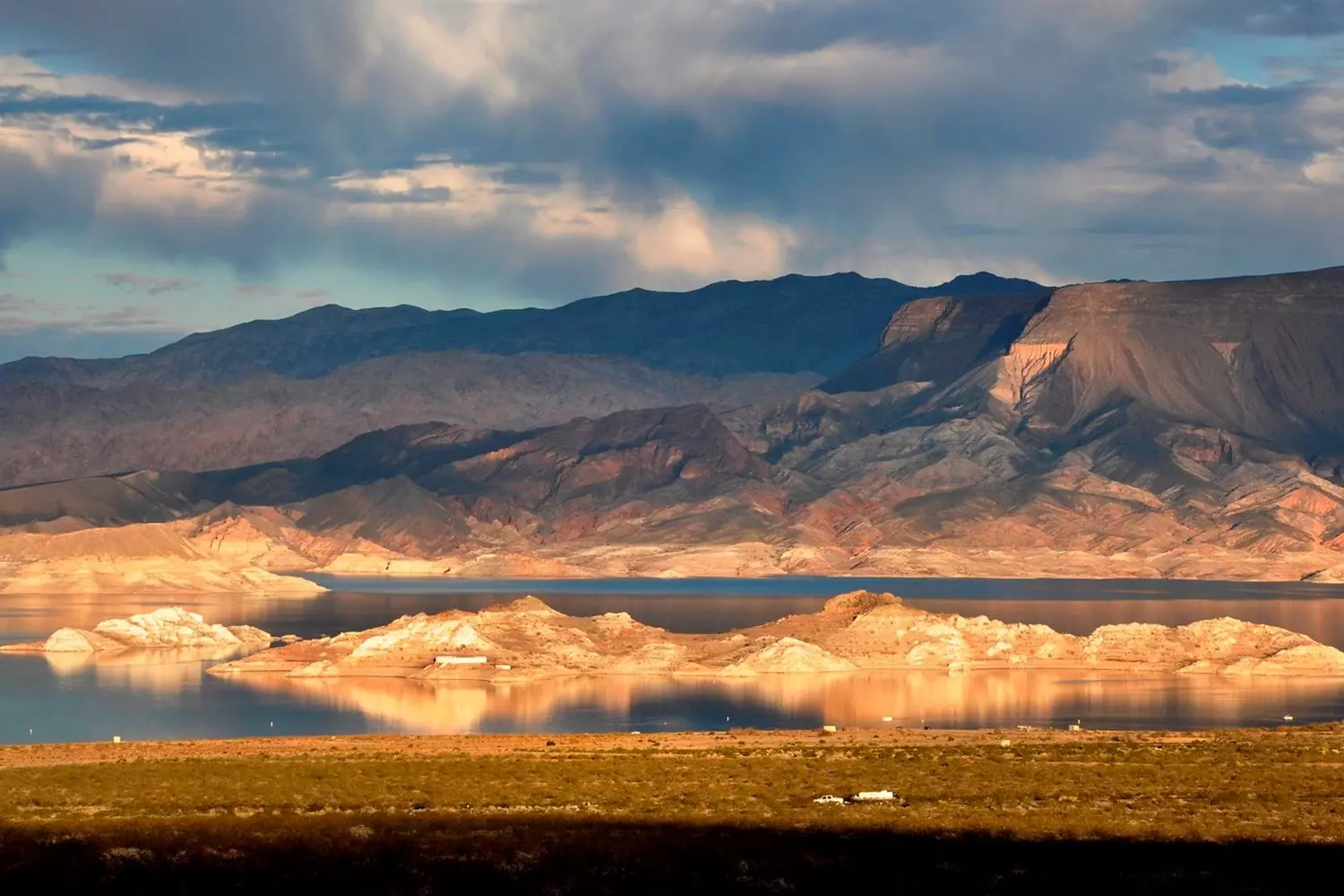
Secrets Beneath the Water: History, Legends, and Mysteries of Lake Mead
Although Lake Mead is artificial, in its less than a century of existence it has accumulated stories, rumors, and mysteries rivaling any ancient natural wonder. Its waters, which filled the canyons after the construction of Hoover Dam, submerged not only rocks and sand but entire settlements, roads, and railway tracks. Literally — beneath the lake’s surface lies a part of American history.
- 01. One of the most famous submerged sites is the town of St. Thomas. Once bustling with life: farmers grew corn, children ran through the streets, and locals attended church and school. But after the dam was launched, the water came swiftly, and the town disappeared. In dry years, the ruins of St. Thomas rise again above the surface, as if reminding us that even the eternal can sink beneath the water.
- 02. The lake is surrounded by many rumors and even criminal stories. In 2022, when water levels dropped sharply due to drought, a series of frightening discoveries began. The most talked-about was a human skull found in a barrel near the shore. It later turned out to be a possible victim of mafia violence from the 1970s. Rumors that Lake Mead had served as a “graveyard” for unwanted crime witnesses for decades flared up again.
- 03. That’s not all. Divers and explorers report numerous sunken boats, cars, World War II military equipment, and some even claim to have found ancient artifacts belonging to the first tribes of Native Americans.
- 04. Additionally, Lake Mead has attracted the attention of ufologists. Some eyewitnesses claim to have seen glowing objects or strange phenomena around the reservoir. Is this connected to the nearby Area 51? No one knows. But it only adds to the aura of mystery.
The story of Lake Mead is not just about battling drought and managing resources. It is a living entity that holds traces of different eras: from Native American campsites to headlines in crime chronicles. Beneath the water lies a whole world still not fully uncovered. And who knows what secrets time will surface next.
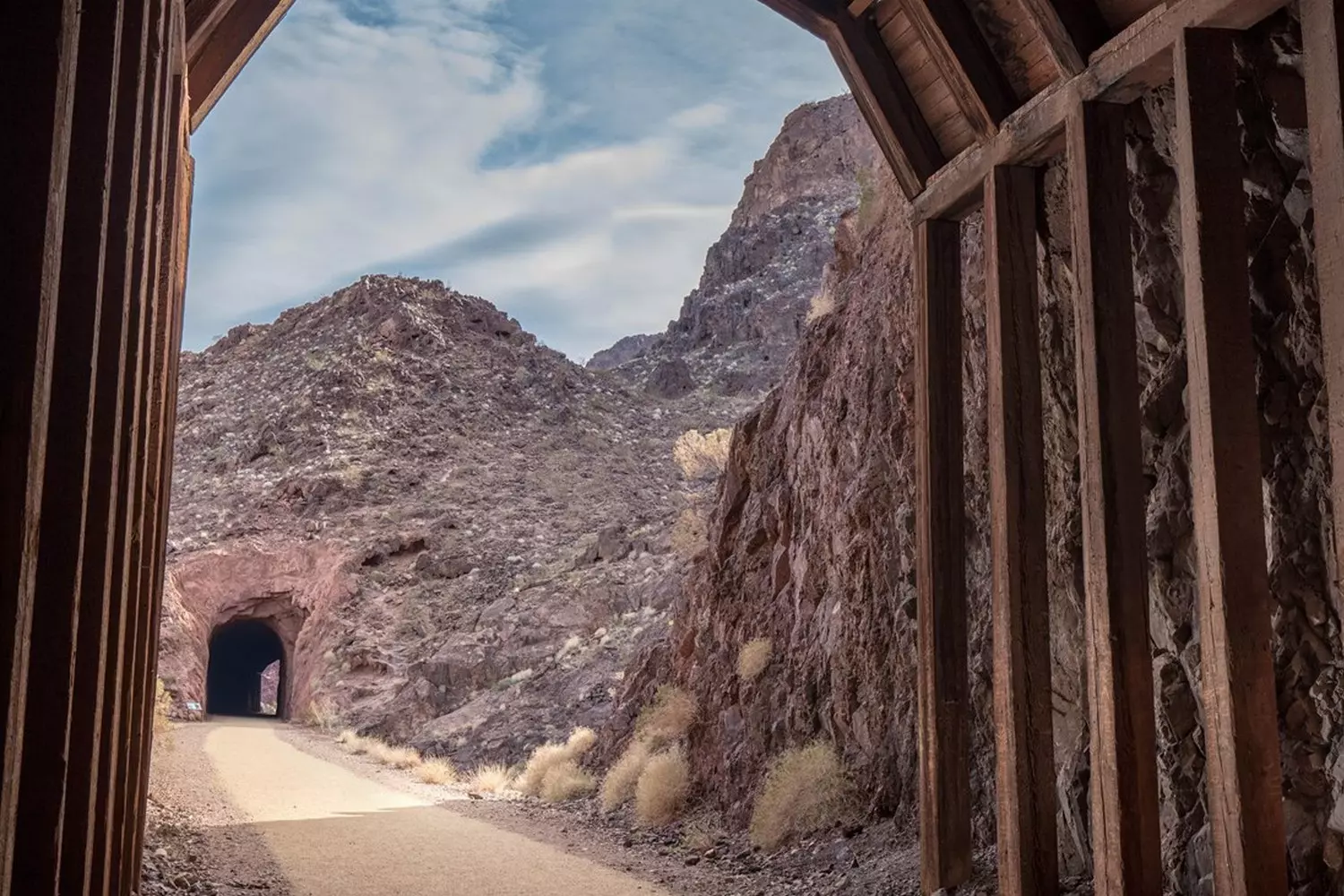
Nature, Ecology, and the Battle for the Future of Lake Mead
Lake Mead is part of the Lake Mead National Recreation Area. This is not just a territory for camping and water activities, but a protected natural reserve home to many unique species:
- Bighorn sheep gracefully navigating the rocky cliffs;
- Coyotes and desert foxes;
- Bald eagles, hawks, buzzards, and peregrine falcons;
- Cacti, yuccas, Joshua trees, saltbush, and rare desert grasses.
This landscape combines the harshness of the desert with the fragility of the aquatic ecosystem, making it especially sensitive to climate change and human activity.
Water level: a worrying signal
One of the main environmental problems is the sharp drop in water levels. Over the past 20 years, the level has fallen by tens of meters. This led to the appearance of the famous “Bathtub Rings” — light bands on the rocks showing where the water once was. The causes are:
- Prolonged drought in the southwestern USA;
- Excessive water consumption in Las Vegas, California, and Arizona;
- Global warming and decreased snowpack in the Rocky Mountains.
These changes threaten not only the ecosystem but also the water supply of millions of people. Some areas have already introduced restrictions on irrigation and other water-saving measures.
Pollution and invasive species
The lake also suffers from pollution. Tourism brings income but also trash, fuel residues, and plastic pollution. In recent years, a large-scale campaign has been launched to install waste sorting stations, ban certain types of motorboats, and introduce water safety rules.
Invasive species such as Dreissena (zebra mussels) pose another threat — they damage infrastructure, disrupt the ecosystem, and displace native species. Biologists combat them using control traps, biofiltration, and educational programs.
Efforts to save the lake
- Continuous ecological monitoring and satellite observation;
- Limiting water withdrawal and developing desalination technologies;
- Ecotourism and volunteer programs for shoreline cleanups;
- Public education and participation in the "Save Lake Mead" initiatives.
Despite these worrying signals, Lake Mead continues to live and inspire. Like all nature, it adapts to new conditions. And right now is the time when each of us can become part of its future.

The Lake That Fuels the West: Why America Needs Mead
If you try to understand why Lake Mead is called the “Breadwinner of the West”, just take a look at the map and the numbers. It’s not just a picturesque weekend getaway or a giant water-filled basin. It’s an artery that feeds millions of people, farmland, cities, and even power grids.
- 01. Water supply for megacities
Lake Mead provides fresh water to: Las Vegas (up to 90% of the city’s needs), Phoenix, Arizona, Los Angeles and Southern California, dozens of smaller towns and suburbs. In total — more than 25 million people. Without the water from this reservoir, these cities literally couldn’t exist in the desert environment. - 02. Agricultural irrigation
Lake Mead and the Hoover Dam allow irrigation of more than 2 million acres of land, turning lifeless deserts into fertile fields. This means: oranges, grapes, almonds, and olives from California; vegetables from Arizona; livestock and grain in Nevada and New Mexico.
Thanks to the stable water supply, farmers in the Southwest can grow crops year-round, and products from these regions are distributed across the country and abroad. - 03. Electricity generation
The Hoover Dam, powered by Lake Mead, is one of the largest hydroelectric facilities in the U.S. Its capacity is about 2,000 megawatts, enough to supply: more than 1.3 million homes, infrastructure, and businesses in Nevada, Arizona, and California. This is “green” energy, produced without CO₂ emissions, which is especially important in the era of climate challenges. - 04. Flood and drought protection
Lake Mead acts as a buffer — it holds back spring floods and ensures a stable flow of water during dry summers. This allows:
- Reducing the risk of catastrophic flooding;
- Guaranteeing water access during drought periods;
- Managing water resources more flexibly and safely.
- 05. Economy and jobs
Thousands of people are employed managing the lake’s resources, tourism, ecotechnologies, and energy sectors. The products, water, and energy provided by Mead represent billions of dollars annually and underpin the region’s economic stability.
So, when you look at the calm surface of the water by the shore, remember: this is not just a lake. It is the foundation of an entire region, a symbol of cooperation, engineering, and hope. That’s why Lake Mead is not just a reservoir, but the breadwinner, heart, and shield of the American West.
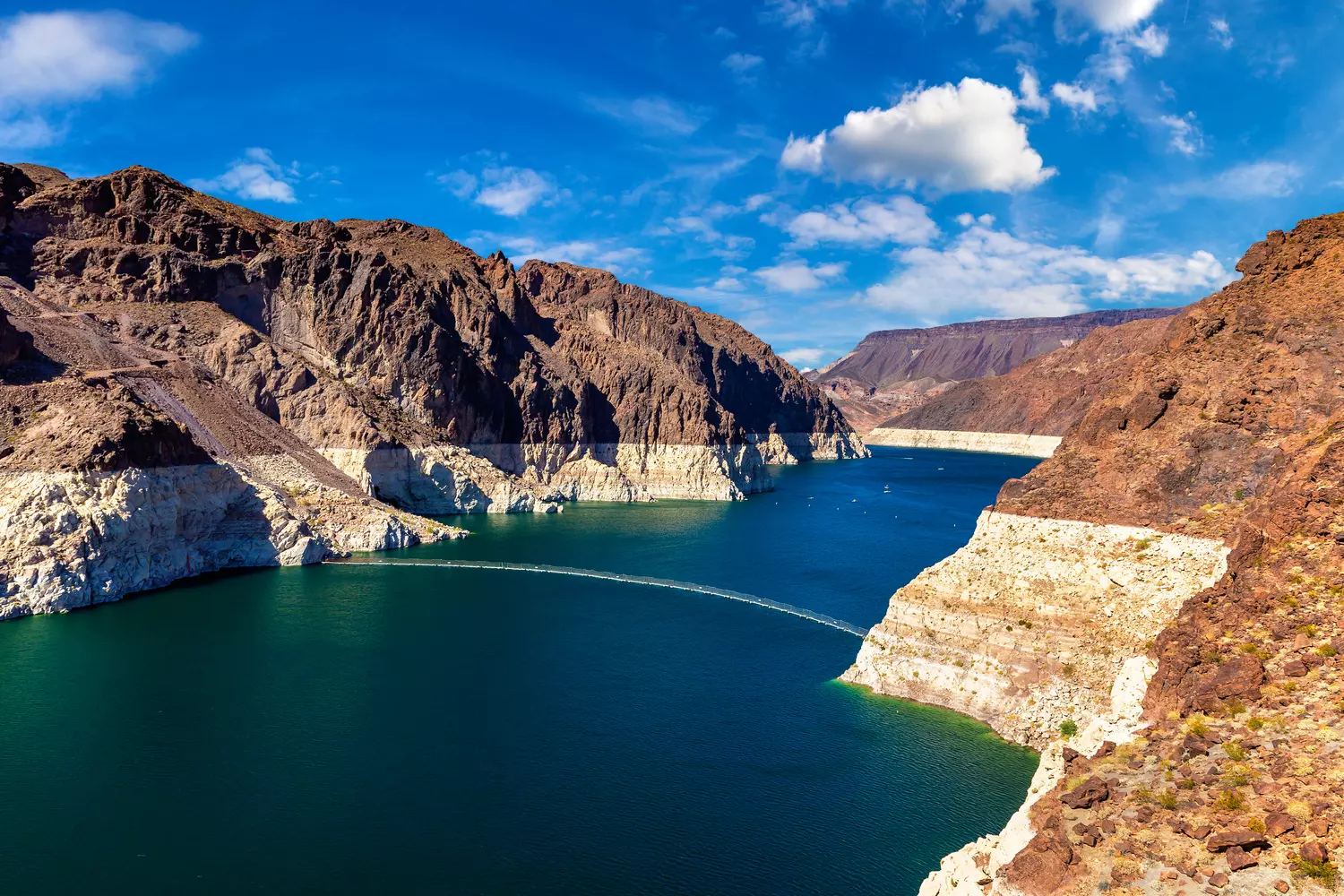
Why Tourists Fall in Love with Lake Mead: Peace, Space, and Adventure
Lake Mead is a magnet for those seeking not just landscapes but meaning. Here, there’s no usual resort noise, but endless water surfaces, canyons, hidden trails, and the spirit of true freedom. Why do people keep coming back?
- 01. Close to Las Vegas — yet a completely different universe
Just 40–45 minutes by car from Las Vegas — and suddenly you find yourself in a totally different world. Where not long ago slot machines rattled and billboards flashed, now there’s silence, the scent of the desert, and the breeze off the water. It’s the perfect way to “reset” after the city of lights. - 02. Variety of activities for every taste
Lake Mead offers an amazing range of activities:
- Fishing (including trophy bass);
- Kayaking through winding bays and canyons;
- Swimming and snorkeling in warm, clear water;
- Hiking desert trails with panoramic views;
- Camping under open skies with a campfire and starry nights.
Plus — well-developed infrastructure with marinas, boat rentals, tours, and viewpoints.
- 03. Landscapes that touch the soul
Lake Mead seems made for photographers, artists, and anyone who cherishes beauty:
- Red rocks reflecting in the azure waters;
- Whimsical canyon shapes sculpted by wind and water;
- Morning mists and fiery sunsets.
- 04. A touch of history
Here, every stone holds the past:
- The Hoover Dam — a symbol of American progress in the 1930s;
- Abandoned villages and submerged settlements flooded when the reservoir filled;
- Traces of the Ancestral Puebloans (Anasazi) and petroglyphs on the rocks.
Historians, archaeologists, and curious travelers will find here a treasure trove of mysteries and secrets.
- 05. A place of power and solitude
Mead is not only for active tourists. It’s a space for those who just want to sit on a rock and watch the wind play with the waves. Who are ready to switch off their phone and hear themselves. This is the lake’s main magic: it doesn’t ask you to be anyone. It simply exists — and that is enough.
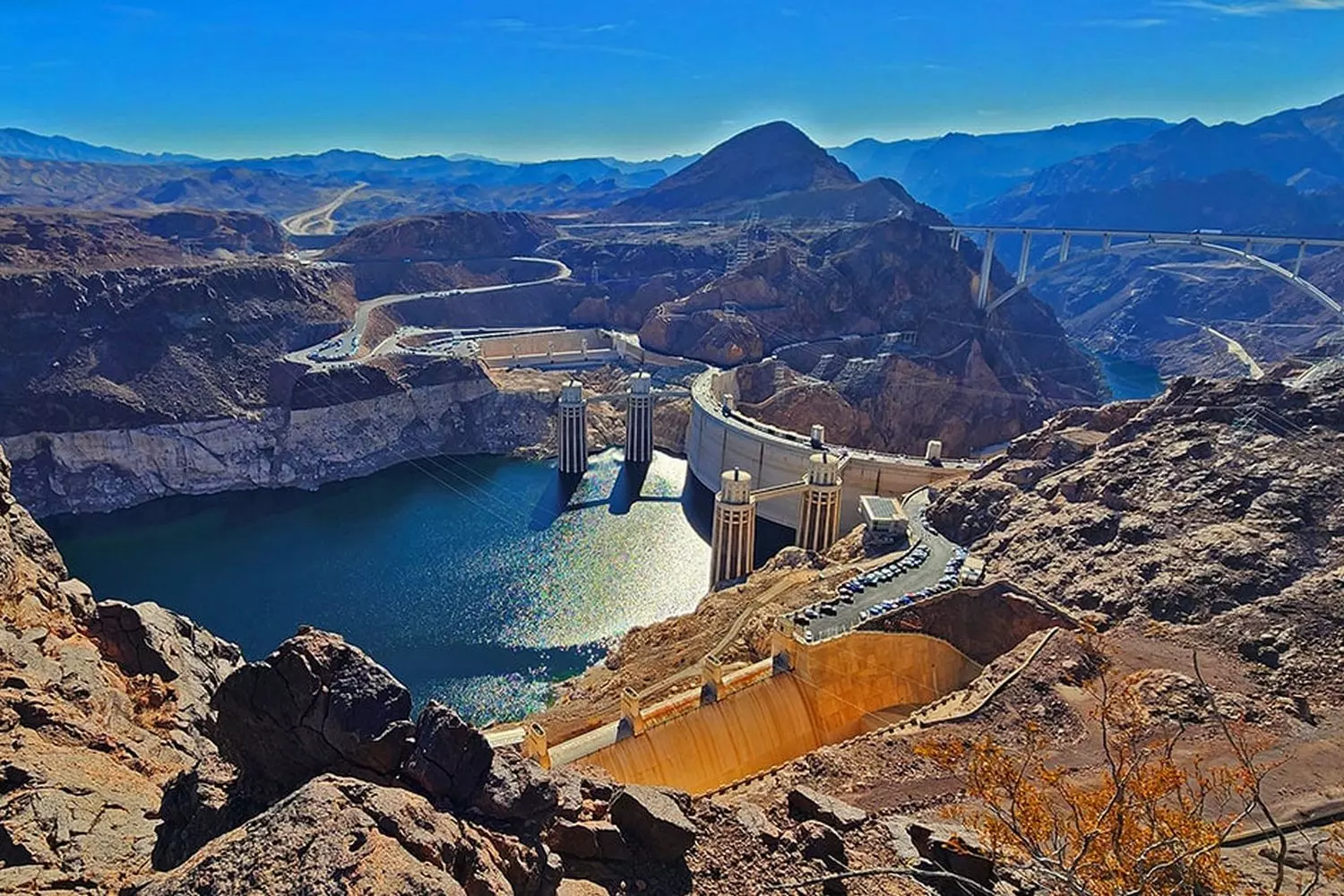
20 most amazing facts about the USA
What to See and Do at Lake Mead: Active Recreation and Unforgettable Experiences
Lake Mead is not just a reservoir, but a whole world of adventures and discoveries. Here, everyone can find something to their liking — from peaceful walks and fishing to extreme water activities and educational tours. Let’s explore the most popular and interesting places and activities.
- 01. Hoover Dam — an engineering marvel and historic symbol
This is not just a dam but a true architectural and technical masterpiece that transformed the American Southwest. Visiting the dam means touching history:
- Guided tours explaining the dam’s construction and purpose;
- Viewpoints with breathtaking views of the Colorado River and Lake Mead;
- An open-air museum with photos, artifacts, and videos.
This place inspires and reminds how human ingenuity and effort can reshape nature.
- 02. Recreation areas and beaches — comfort and coziness by the shore
- Boulder Beach
One of the most popular beaches and campgrounds on the lake. A great spot for picnics, barbecues, and family relaxation with clean sand and a gentle water entry. - Hemenway Harbor
The central marina with boat, motorboat, and jet ski rentals, plus cafes and souvenir shops. A perfect starting point for water excursions. - Temple Bar
A secluded spot for those wanting to escape the hustle and enjoy tranquility, fishing, and views of desert cliffs.
- 03. Water adventures — adrenaline and freedom
The waters of Lake Mead are ideal for various activities:
- Kayaking and stand-up paddleboarding — explore calm bays, sunken objects, and enjoy the silence.
- Jet skiing — for those who love speed and thrill on the waves.
- Yacht and motorboat tours — rent a boat for a day trip around the lake with friends or family.
- 04. Fishing — treasures beneath the water
Lake Mead is famous for its diverse fish species, attracting both beginners and experienced anglers:
- Striped bass — the most common trophy fish;
- Trout — for sport fishing enthusiasts;
- Catfish and largemouth bass — large local species.
Getting a permit is easy — online or at tackle shops. Fishing at Lake Mead is not just a sport, but a way to relax in nature.
- 05. Hiking and biking trails — explore nature step by step
- Historic Railroad Trail
A path along an abandoned railroad beside the lake and dam with beautiful views. A family-friendly easy route. - River Mountains Loop Trail
A 55-km circular route popular with cyclists and long-distance hikers, passing through diverse landscapes.
- 06. Diving and underwater mysteries — dive into the past
The dropping water levels reveal ancient submerged villages, sunken boats, and military sites. For underwater explorers and history lovers, this is a real treasure:
- The chance to explore unique underwater artifacts;
- Tours with experienced divers;
- Unique photos and videos impossible to capture elsewhere.
- 07. Additional places and activities
- Echo Bay
A spot for quiet rest with great fishing and camping opportunities. - Las Vegas Bay
Another popular beach with amenities for families and water sports. - Peaks and viewpoints
For example, Point Lookout or Historic Railroad Trail Overlook offering panoramic views of the lake and surrounding desert — perfect for photos and sunset watching.
Lake Mead is more than a place to relax by the water. It’s an immersion into nature, history, and the authentic spirit of America’s Southwest. Every day here brings new discoveries, and every evening — tranquility under a starry sky. If you’re planning a trip to the Las Vegas region, be sure to include Lake Mead in your itinerary. There you’ll not only relax but recharge with energy, inspiration, and lasting memories.
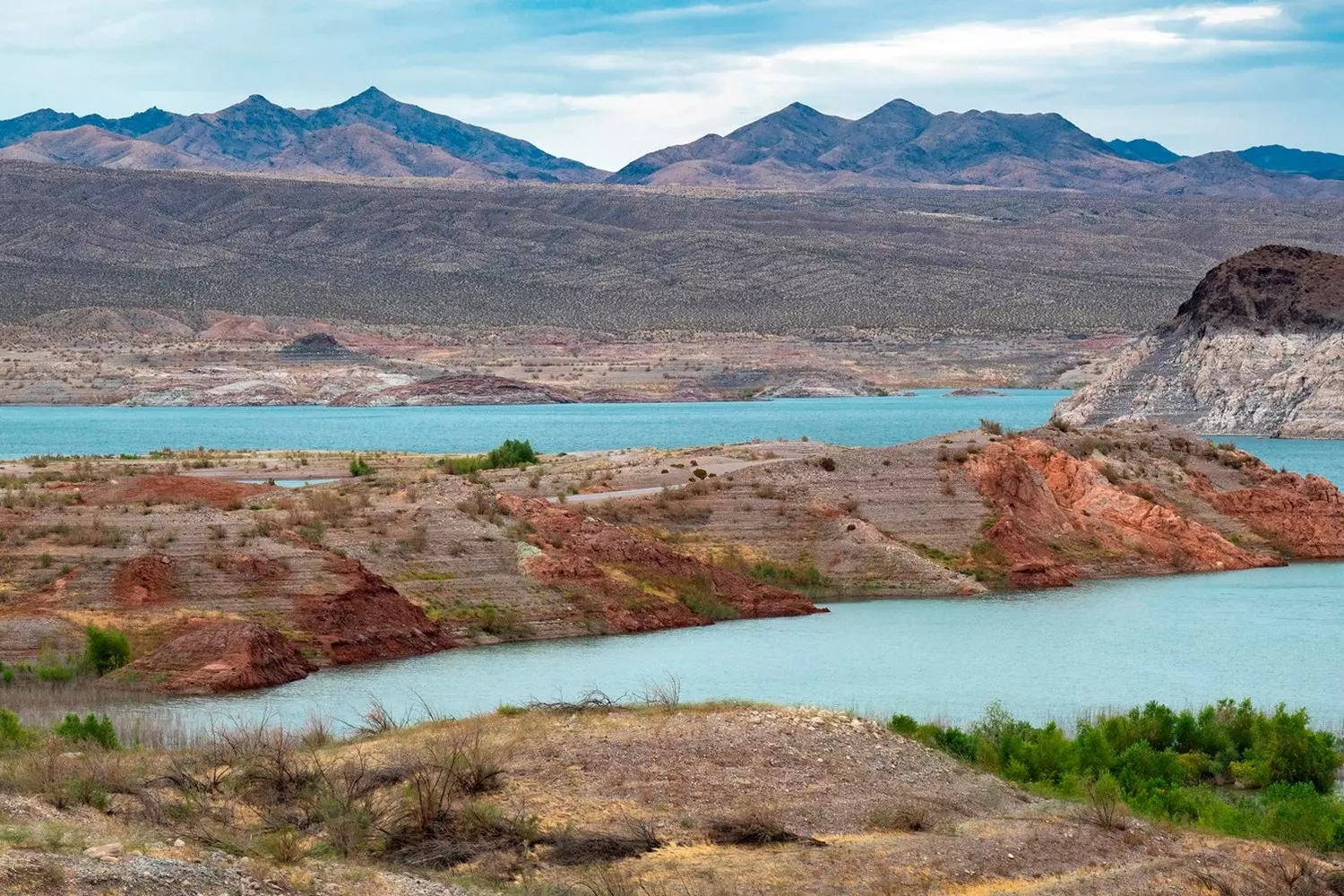
Everything a Tourist Needs to Know: Preparation and Tips for the Perfect Lake Mead Vacation
When planning a trip to Lake Mead, it's important to prepare in advance to ensure a smooth and enjoyable experience. This destination attracts millions of visitors each year, so knowing the region's features and considering them can help avoid inconveniences and make your vacation more comfortable.
- 01. Advance booking — the key to a successful vacation
During the high season — from spring through fall — demand for boats, tours, and campsites increases significantly. It is recommended to book in advance:
- A boat or motorboat for exploring the lake;
- Guided tours of the Hoover Dam and surrounding landmarks;
- Spots at campsites and popular beaches like Boulder Beach or Echo Bay.
This way, you'll avoid long lines and ensure the best service.
- 02. Water safety comes first
Lake Mead is an open water area with changeable conditions, so remember:
- Always wear a life jacket when using water transport;
- Never go out on the water alone, especially when kayaking or paddleboarding;
- Follow navigation rules and posted warnings along the shore and at marinas;
- Monitor the weather — strong winds and storms can quickly ruin your day.
- 03. Protect nature — the ecosystem is at risk
The lake and surrounding desert form a fragile ecosystem. To preserve it for future generations:
- Never leave trash — use designated bins and waste bags;
- Do not damage plants or disturb wildlife;
- Light fires only in designated areas;
- Use eco-friendly insect repellents and sunscreens.
- 04. Beat the heat — protect your health
The American Southwest is known for its hot, dry climate, especially in summer:
- Drink water regularly — at least 2 liters a day, and more in the heat;
- Use sunscreen with high SPF protection;
- Wear light, breathable clothing and head coverings — caps, hats, or bandanas;
- Take breaks in the shade and avoid physical activity during midday hours.
- 05. Best time to visit — when is it most comfortable?
- Spring (March–May)
Blooming desert, pleasant temperatures, and vibrant greenery. - Autumn (September–November)
Warm water, fewer tourists, ideal for fishing and hiking. - Summer (June–August)
Peak season, but temperatures often exceed 40°C (104°F) — plan water activities in the morning or evening. - Winter (December–February)
Cooler weather, low traffic — perfect for peace and nature lovers.
- 06. What to bring with you
- Plenty of water — staying hydrated is essential;
- Sunscreen and SPF lip balm;
- Headwear — a cap, hat, or scarf;
- Comfortable shoes for hiking and walking;
- A swimsuit and spare clothes;
- A camera or drone — the lake offers breathtaking views;
- Extra batteries and memory cards;
- Insect repellent and a first aid kit.
- 07. How to get to Lake Mead
Lake Mead is just about 40 minutes by car from Las Vegas:
- Take I-515 southeast;
- Then follow US-93 toward Boulder City — a good place to stop and visit the Hoover Dam Museum;
- Follow the signs to the Lake Mead National Recreation Area;
- On site you’ll find large parking lots, visitor centers, campgrounds, and rental services.
- 08. Additional tips and recommendations
- Plan your routes in advance and check the weather forecast;
- Don’t forget to charge your devices and bring portable power banks;
- Check park and attraction hours — some locations may close early;
- Bring a physical map or download offline maps — mobile signal may be weak in some areas.
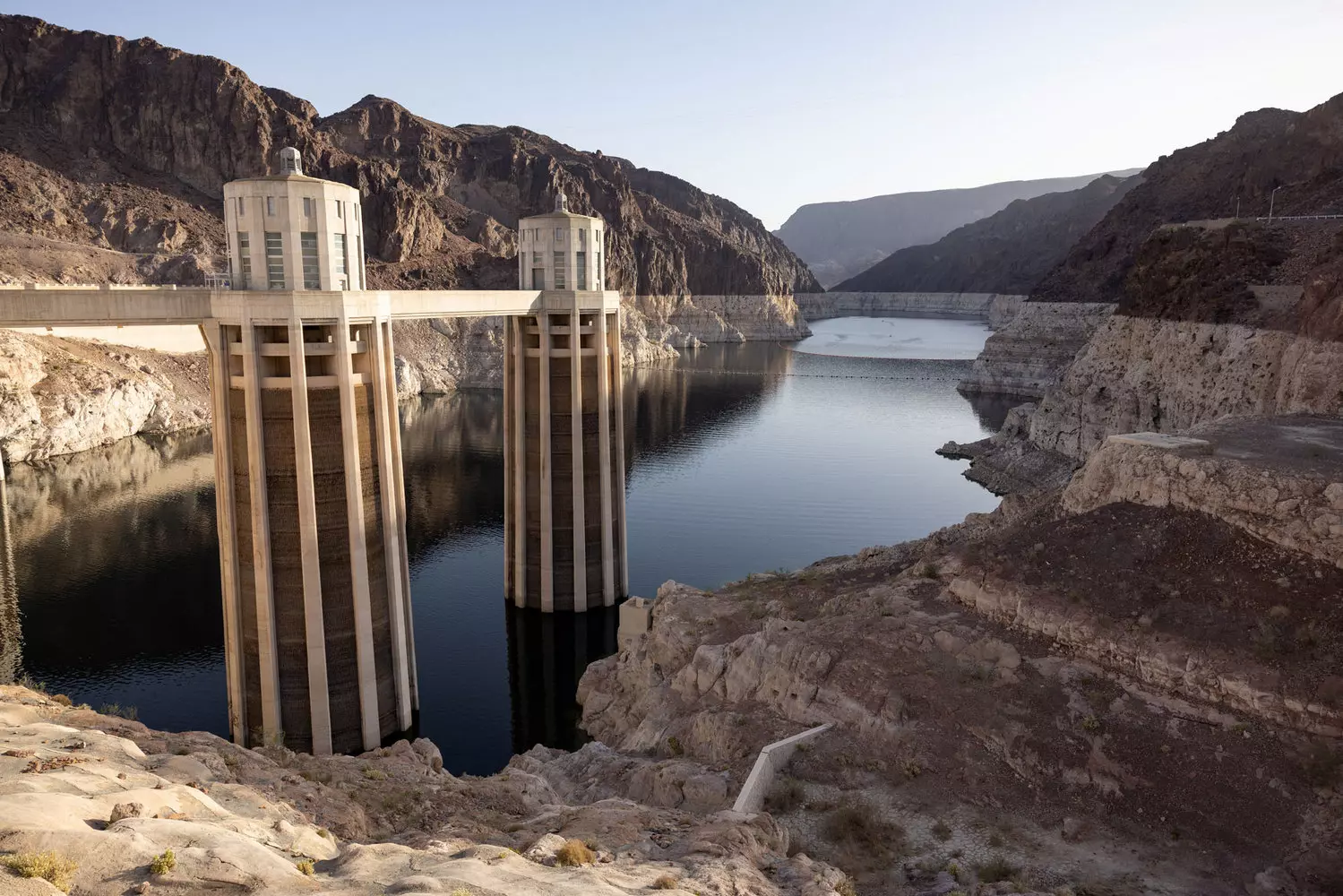
Lake Mead: Shadows of the Past and Challenges of the Future in the Heart of the Desert
Lake Mead is not just the largest reservoir in the United States — it’s a true symbol of the clash between nature and human civilization. Created by engineers during the Great Depression, it has provided water to millions for decades. But today, it’s turning into an ecological disaster zone. Still, beneath its waters lie far darker and more intriguing secrets: from sunken towns to criminal conspiracies linked to Las Vegas. Here are the most unexpected facts about this unique place.
- 01. “Dead Pool”: the point of no return
The lake’s water level has dropped to 30% of its normal volume, and if it reaches 272 meters, Hoover Dam will cease to generate electricity. That would leave 8 million people without power and could make the U.S. Southwest uninhabitable. - 02. An engineering marvel with a dark side
The Hoover Dam, which created the lake, was once hailed as a triumph of science — but today, experts call it a “historic mistake.” Due to excessive water extraction and drought, the reservoir may vanish, and with it — the future of entire states. - 03. Secret submarines were tested here
At the height of the Cold War, the CIA and U.S. Navy used the depths of Lake Mead to test underwater vessels. The lake’s clear waters and lack of strong currents made it ideal for secret operations. - 04. There were sharks in the lake (briefly)
In the 1970s, Lake Mead hosted a strange experiment: several freshwater bull sharks were released to study their adaptation. The project was quickly shut down, but rumors of “lake sharks” still excite tourists today. - 05. Radioactive waste may lie on the lakebed
In the mid-20th century, nuclear tests and later waste disposal took place near the lake. Some researchers believe that dangerous materials may have entered the water — though there’s no official confirmation. - 06. The lake is “moving” due to tectonic shifts
Geologists have found that the Lake Mead basin is slowly deforming under the pressure of water and seismic activity. This could impact the long-term stability of Hoover Dam. - 07. “Star Wars” and other blockbusters were filmed here
The futuristic landscapes of the lake’s dried-out sections attracted filmmakers. For example, scenes of the desert planet Jedha in “Star Wars: Rogue One” (2016) were filmed here. - 08. A hidden network of tunnels lies beneath
In the 1930s, engineers built a drainage tunnel system beneath the lake during the construction of Hoover Dam. Some have resurfaced, but most remain submerged. - 09. Lake Mead is home to unique fish species
Despite ecological issues, rare species like the razorback sucker and endemic rainbow trout still live here. But their survival is now threatened by increasing water salinity. - 10. The “ghost lake” in Fallout
In the video game Fallout: New Vegas, Lake Mead is portrayed as a zone inhabited by mutants and raiders. Ironically, in real life, its shores have also become a refuge for outcasts and criminal elements.
Lake Mead is a mirror reflecting both humanity’s greatest achievements and its most tragic miscalculations. From criminal mysteries to ecological collapse, its story is still being written before our eyes. And perhaps the time has come to decide: will we save it — or watch the legend die?
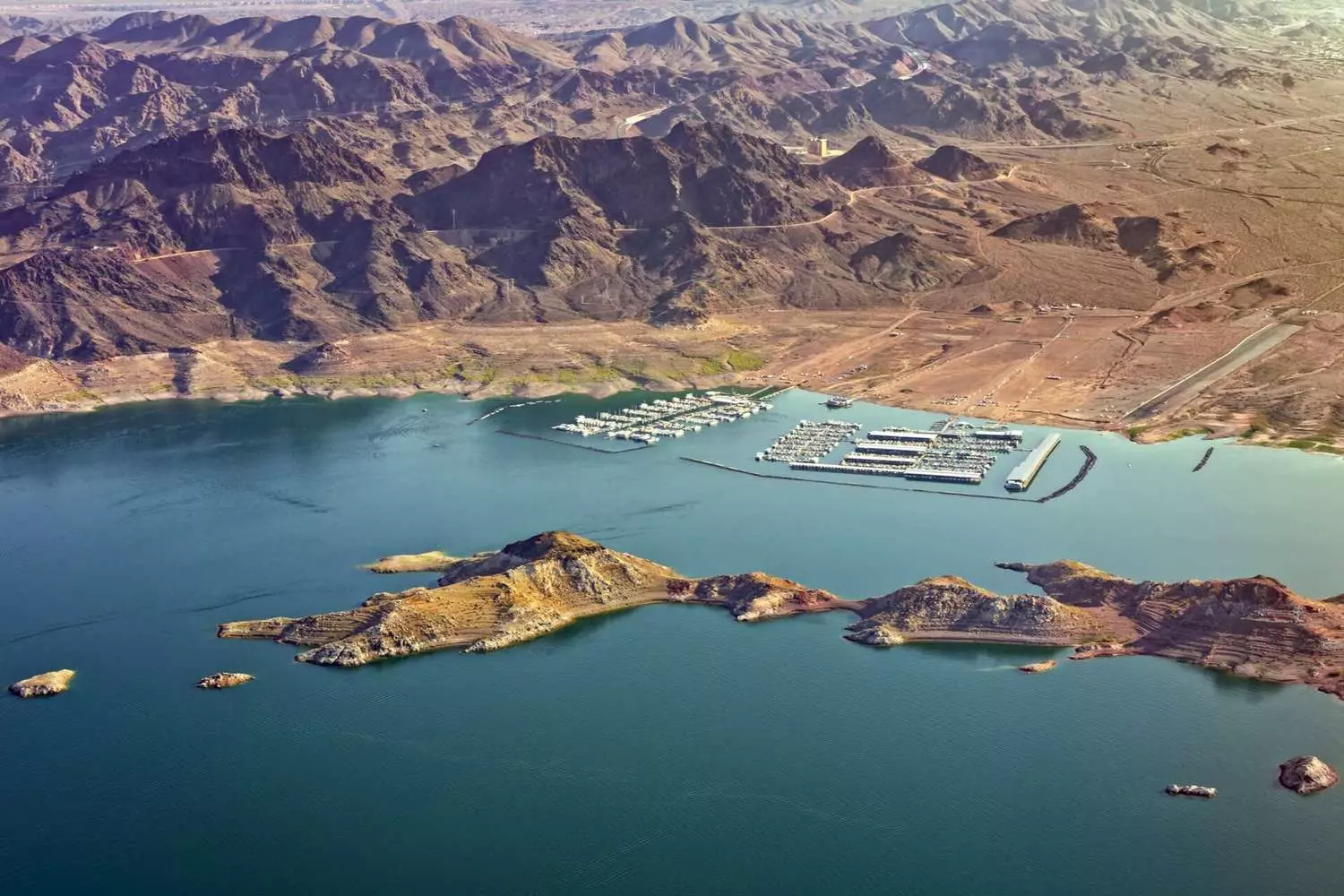
A Lake Worth Discovering with American Butler
Lake Mead is much more than just a body of water in the desert. It’s a symbol of engineering marvel, a corner of natural harmony, and a place where you can truly unwind. There’s no city rush here — only open space, silence, and a sense of freedom.
If you want to discover America not through the noise of its megacities but through the breath of its nature — start with Lake Mead.
At American Butler, we know how to turn an ordinary trip into a special adventure. Looking for a personalized guided tour? Need a transfer or boat rental? Searching for the perfect scenic spot to propose? We’ll take care of it all.
Lake Mead is waiting for you.



























